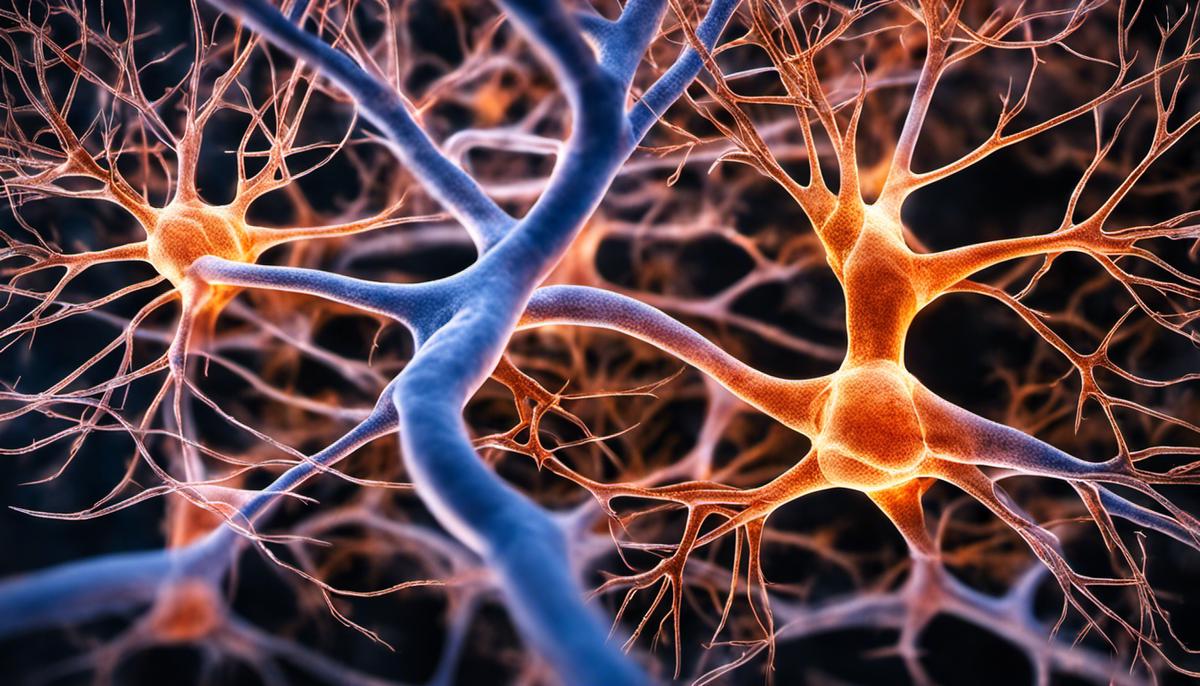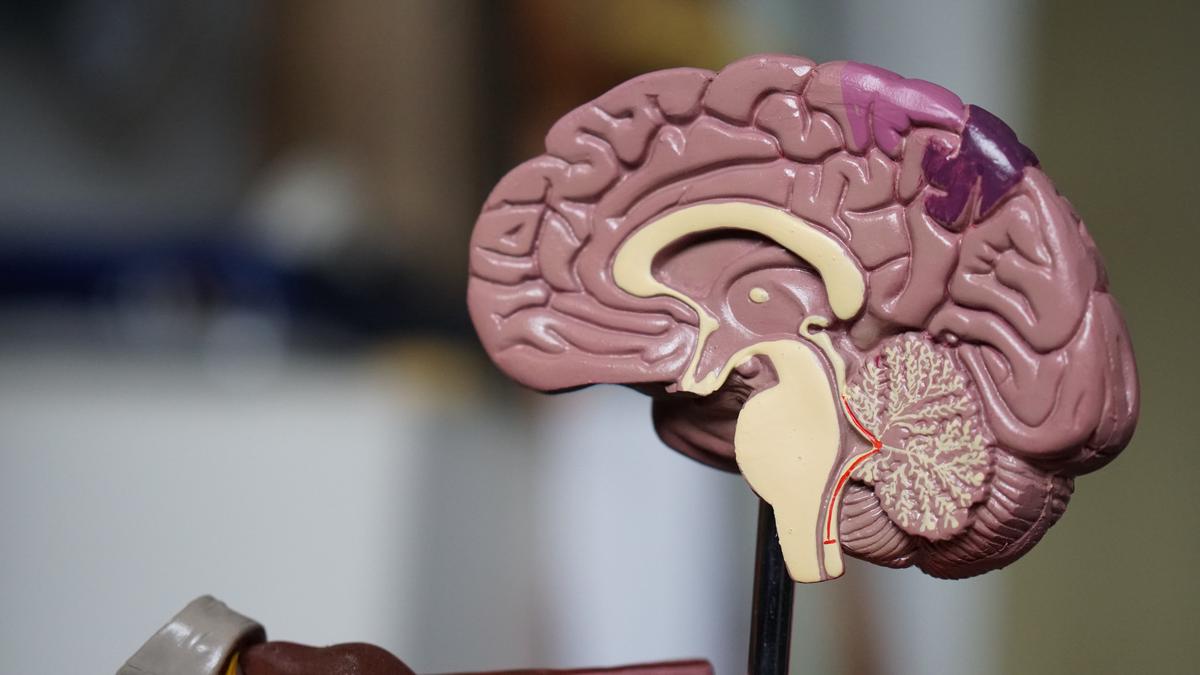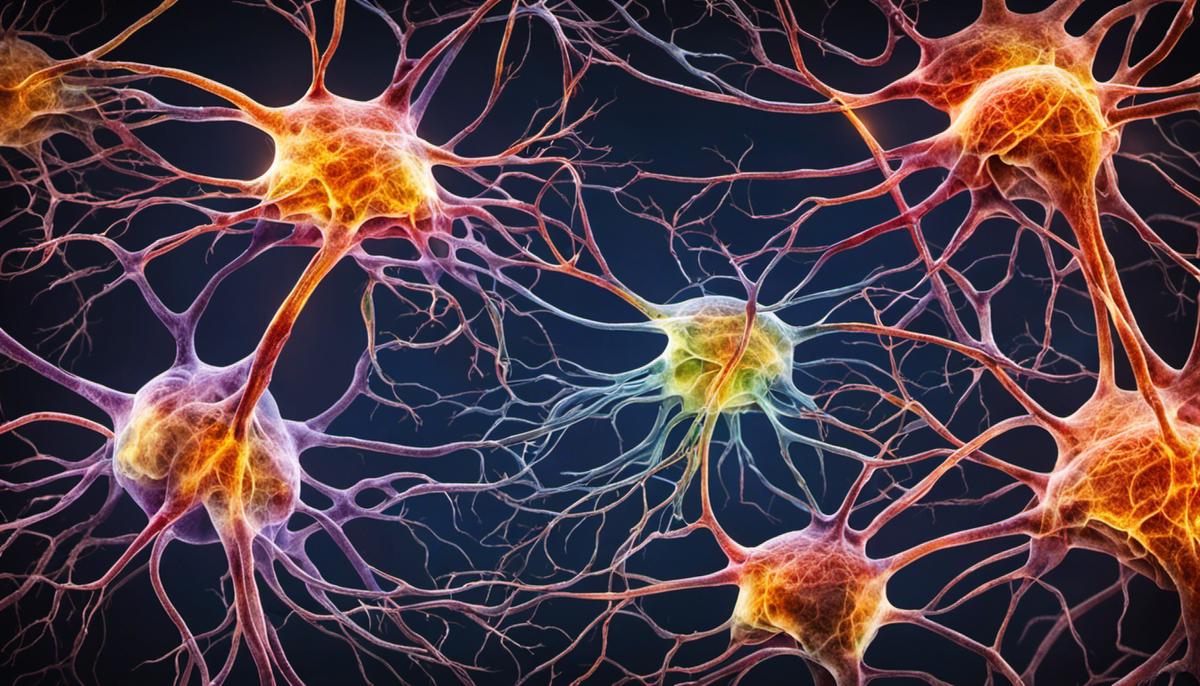Understanding dementia—a debilitating condition characterized by cognitive decline—requires a comprehensive investigation into its intricate neurobiological mechanisms, risk factors, common types, and preventive measures. To truly comprehend the root of this widespread health crisis, one must delve deep into the underlying neurological processes, chiefly concerning neuronal damage and its effect on brain function. Dementia often stems from a complex interaction between age-related cognitive decline, genetic disposition, and lifestyle elements. Additionally, discerning the differences between Alzheimer’s, vascular dementia, Parkinson’s disease dementia, mixed dementia, frontotemporal disorders, and dementia with Lewy bodies aids in better recognizing the individual pathological characteristics of each class. Beyond this, recognizing key risk factors—genetic, lifestyle, cardiovascular, environmental—offers up invaluable insight into the potential causes and corresponding prevention tactics of this disease. The significance of early screening, along with lifestyle modifications and therapeutic interventions, can’t be overstated in managing and mitigating dementia’s onset.
Table of Contents
The Neurobiological Mechanisms of Dementia
Unraveling the Neurobiological Mechanisms Underlying Dementia
Dementia, a term that encompasses a constellation of symptoms including memory loss and cognitive impairment, has long been a subject of intense research. Despite the broad-spectrum manifestation of experiences, the neurobiological mechanisms driving these symptoms are surprisingly uniform.
The brain structures primarily associated with memory retention and cognition – the hippocampus along with the frontal and temporal lobes – are the areas most severely impacted in dementia. Often, symptoms appear when neural transmitters, especially acetylcholine, are diminished. This neurotransmitter plays a vital role in mental alertness, memory function, and attention span. Interruption in this neural signaling has been observed in dementia patients, explaining the memory, cognitive, and behavioral anomalies.
It’s worth mentioning the role of proteins such as tau and beta-amyloid. In a healthy brain, tau proteins stabilize microtubules, integral to the structure and transport within the neuron, whereas beta-amyloids help maintain neuronal health potentially with an antimicrobial role. However, in dementia, especially Alzheimer’s, overproduction or insufficient clearance of these proteins results in their accumulation. Tau proteins become hyperphosphorylated forming neurofibrillary tangles, and beta-amyloids clump together forming plaques. These pathological accumulations lead to neural death, synapse loss and localized inflammation causing structural abnormality especially in the hippocampus- a brain region synonymous with memory forming.
There’s also evidence demonstrating a strong correlation between dementia and vascular diseases. Disruption of blood flow and oxygen supply to the brain, as seen in conditions like stroke or heart disease, could cause Vascular Dementia. In such cases, ischemic injury may lead to cell death and scar tissues, impacting the effective neural communication and manifesting as cognitive decline.
In some instances, dementia is a result of an abnormal immune response. In these phenomena, components of the body’s immune system mistakenly attack the body’s own cells, leading to inflammation and tissue damage. In dementia, this autoimmune reaction can cause significant neuron damage, leading to cognitive impairment.
An important perspective is cellular aging and genetic predisposition. Studies suggest certain genetic variants increase risk, while mutations in specific genes (e.g., APP, PSEN1, and PSEN2) guarantee the development of Alzheimer’s, a common form of dementia. Meanwhile, as cells age, they might no longer be able to repair DNA damage or clean up cellular waste, leading to neuron death, a feature seen in dementia.
Efforts are continuously directed towards understanding this multilayered neurobiological enigma that is dementia. Numerous pieces are yet to fit, however, the knowledge acquired paves the way for targeted therapeutic measures against this debilitating disease, emerging as a testament to human ingenuity and scientific tenacity.

Six Common Classes of Dementia
Navigating through the expansive realms of dementia, we transition to examine in detail, the six most prevalent classes of dementia — Alzheimer’s disease, Vascular dementia, Dementia with Lewy bodies, Frontotemporal dementia, Huntington’s disease dementia, and Parkinson’s disease dementia.
Alzheimer’s disease is the dominant class, accounting for 60-80% of dementia cases. Histopathologically, Alzheimer’s disease is stamped by not only the build-up of beta-amyloid plaques and tau protein tangles but also the cerebral amyloid angiopathy that ensues from beta-amyloid deposits on cerebral blood vessel walls. Inundating the cognitive landscape of afflicted individuals with a distinct breed of dementia, it paves the way for memory decline, language problems, and erratic behavioral changes.
Vascular dementia, the second most common type, is a collateral damage arising from cerebrovascular anomalies including stroke, leaking blood vessels, and areas of brain tissue death due to lack of blood supply. This variety of dementia flaunts a distinct symptomatology branching into disorganized thinking, decreased ability to focus, perceptual disturbances, and difficulties with balance.
Dementia with Lewy bodies, despite bearing a striking resemblance to Alzheimer’s and Parkinson’s disease dementia, is distinctively delineated by the presence of Lewy bodies — spherical protein aggregates—in the brain’s cortex region. In addition to memory and cognitive impairment, individuals may grapple with visual hallucinations, rapid eye movement sleep behavior disorder, and a parkinsonian motor dysfunction, characterized by rigidity and bradykinesia.
Frontotemporal dementia, a broad classification typified by degeneration in the frontal or temporal lobes, spawns an array of perturbing symptoms including dramatic personality transformations, linguistic dysfunction, and behavioral indiscretion. It is postulated that a build-up of cellular material within nerve cells, induced by mutations in multiple genes, may be responsible for this unique neurodegenerative narrative.
Huntington’s disease dementia, spawned by an inherited defective gene on chromosome 4, initiates a relentless assault on the neurons in certain brain areas, resulting in severe cognitive decline. Hallmarks of this variant include the classic chorea or uncontrolled movements, mood disorders, and dysexecutive syndrome, characterized by decision-making and problem-solving deficits.
In Parkinson’s disease dementia, a pathological invader called Lewy bodies infiltrates the substantia nigra, an area rich in dopamine-producing neurons. Initially surfacing as a movement disorder, as the disease marches forward, around 50-80% of people with Parkinson’s may eventually be stricken with dementia, manifesting symptoms of memory loss, hallucinations, and disorganized speech.
Unraveling the intricacies of each dementia class casts crucial light not only on the pathophysiological processes but also on the formidable challenges facing the research and therapeutic community. As we are immersed in this complex biomedical symphony, the dedication to turn scientific insights into efficacious interventions remains undiluted, fueling the ceaseless quest for a dementia-free world.

Photo by dani_franco on Unsplash
Dementia Risk Factors
As we delve deeper into the myriad risk factors associated with dementia, it is paramount to further elucidate established elements such as lifestyle factors and environmental influences that contribute significantly to this ailment.
Lifestyle habits such as smoking or excessive alcohol consumption have an undue influence on the risk probability of dementia. Chronic inhalation of smoke particles leads to oxidative stress, inflammation, and vascular changes, collectively influencing the risk of multiple types of dementia, including Alzheimer’s and vascular dementia. Concurrently, chronic alcohol abuse can result in alcohol-related dementia, known as Korsakoff’s syndrome, characterized by severe memory impairment and deficits in cognitive abilities.
Beyond these controllable factors lie unavoidable environmental influences that may impact dementia risk. For instance, exposure to certain chemicals, such as lead, mercury, and other heavy metals, could influence neurodegeneration and thereby, increase the risk of dementia. Conversely, cognitive and social engagement has been shown to exert a protective effect against dementia and cognitive decline. The “use it or lose it” hypothesis supports the idea that engagement in cognitively stimulating activities and maintaining an active social life can help bolster brain reserve and delay onset of dementia symptoms.
A key aspect in our discussion on risk factors should ideally focus on medical conditions that could potentially act as a precursor to dementia. Conditions such as diabetes, depression, and high blood pressure can increase dementia risk, mainly due to their influence on blood vessels and heart health. For instance, Diabetes mellitus, specifically type 2, is recognized as a significant risk factor due to its ties to insulin resistance, glucose toxicity, and the exacerbation of beta-amyloid and tau pathology. Depression, on the other hand, contributes through mechanisms such as chronic inflammation, changes in the hypothalamic-pituitary-adrenal (HPA) axis and hippocampal shrinkage.
Last but not least, the pivotal role played by sleep cannot be overlooked. Insufficient or poor quality sleep is increasingly recognized as a risk factor for dementia. Sleep disruptions can potentiate the buildup of beta-amyloid plaques and exacerbate neurodegeneration, effectively escalating the risk of dementia, particularly Alzheimer’s disease.
Acquiring a panoramic view of the numerous dementia risk factors provides novel avenues for potential intervention and adds leads to follow in our ongoing research. As we continue in our relentless pursuit of understanding dementia, it is crucial that we explore and analyze every potential contributor, while cognizant of the complex interplay of these factors in the etiology of this multifaceted disease. Unraveling the dementia’s intricacies could pave the way for more personalized and effective prevention strategies, potentially shifting our paradigm from treatment to prevention. While we cannot reverse the clock on the progressive nature of this disease, understanding these risk factors can play a pivotal role in decreasing incidence and mitigating its devastating impact.

Preventive Measures for Dementia
Given the broad swath of pathologies that can cause dementia, it is unsurprising that efforts to prevent its onset and slow its progression are similarly varied. Research suggests that certain methods and lifestyle changes may foster brain health and resilience against cognitive decline and dementia. Furthermore, the emerging philosophy of “dementia prevention” is gaining traction, translating to strategies aimed at high-risk population subsets.
Physical exercise stands high on the list, with ample evidence attesting to its potential to staunch cognitive decline. The mechanism driving this likely involves improved blood flow and oxygenation to key brain regions. Aerobic exercise, in particular, has shown to promote neuronal growth and enhance synaptic plasticity in the hippocampus, an area pivotal for memory processing.
Diet, too, has a significant bearing on dementia risk. A Mediterranean diet, characterized by high consumption of fruits, vegetables, whole grains, and lean proteins like fish and poultry, has been associated with a lower risk of cognitive decline. The recall-enhancing effects of omega-3 fatty acids, antioxidant lynchpin vitamin E, and folic acid (which lowers homocysteine, an amino acid linked to cognitive impairment) have been heavily studied. Indeed, it’s tempting to coin the phrase “you are what you eat” as far as the brain is concerned.
In tandem with diet, managing comorbid conditions like obesity, hypercholesterolemia, hypertension, and type 2 diabetes can significantly mitigate the risk of dementia, implying the importance of regular health check-ups. Reducing systemic vascular resistance coupled with tight control of blood sugars underlies the protective effect of a healthy lifestyle against dementia.
Mental stimulation and cognitive training also figure prominently in dementia risk reduction. Neuroplasticity can be fostered by intellectually stimulating activities like reading, writing, playing board games, and even attending lectures or concerts. Advances in technology have given rise to an expanding list of computer-based cognitive training programs, presumptively designed to strengthen critical areas of cognition and delay or prevent dementia onset.
Social engagement appears to have similar effects. Regular social interactions can activate different areas of the brain and may buffer against dementia by challenging cognitive abilities and enhancing overall cerebral capacity. More research is needed in this area to conclusively draw links, but a socially active lifestyle seems poised to serve as a viable defense against dementia.
Lastlyn, getting adequate sleep is an underappreciated, but crucial aspect to mitigating dementia risk. Chronic disruptions in sleep or having conditions like sleep apnea can accelerate brain aging and may lead to early cognitive decline. Therefore, ensuring healthy sleep is a necessary measure in the multipronged approach to ward off dementia.
Appropriately enough, the practice of managing stress properly and maintaining a balanced lifestyle emerges as the common denominator underpinning all these strategies. In conclusion, while there exists no magic bullet to prevent dementia, a hybrid approach that incorporates regular physical activity, a well-balanced diet, sound sleep, and active cognitive engagement could slow down, if not forestall, the onset of dementia. Such an approach not only aligns with good health in general but precisely captures the essence of an academically impressive but practically vital dimension: the art and science of aging well.

Unraveling the causes and potential preventive measures for dementia holds the key to safeguard future generations from this enfeebling condition. While scientific research continues to expand our understanding, it invariably points towards the importance of healthy lifestyles and adequate health management for warding off dementia. Central to this is a balanced diet, engaging in regular physical and mental exercises, and abstaining from harmful habits like smoking and excessive drinking. The spotlight on managing cardiovascular health, particularly hypertension and obesity, depicts how interconnected our body systems are and their influence on brain health. In addition to lifestyle changes, early screening can play an essential role in early identification and prompt therapeutic interventions, potentially curbing the disease’s progression. The responses to dementia—whether they are preventative changes in habits or reactions to early symptoms of the disease—demonstrate the power of informed, proactive health measures in shaping our neurological future.

Rajan Moonbeam is a dedicated health writer with a Master of Public Health (MPH) degree. Specializing in holistic wellness and preventive care, Rajan combines scientific research with natural approaches to health, offering readers practical advice on living their healthiest life. His work is a beacon for those seeking to navigate the path to well-being with integrity and balance.

